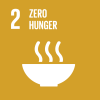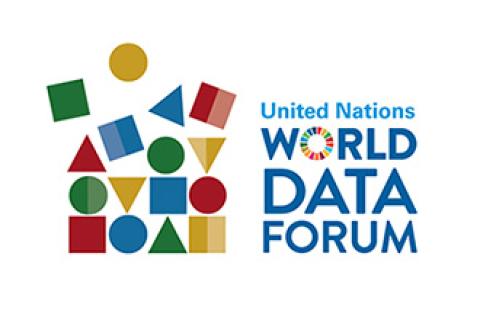
Volume of production per labour unit by classes of farming/pastoral/forestry enterprise size
Last updated on 1 February 2022
This indicator is currently classified as Tier II. The Food and Agriculture Organization of the United Nations (FAO) is the Custodian agency for this indicator.
Unit of measure: Value of production per labour day of small-scale food producers (in constant PPP USD 2011)
Why is this indicator important?
Small-scale food producers constitute the majority of food producers in many countries. Accordingly, enhancing sustainable food production systems and resilient agricultural practices of small-scale producers is important to combat hunger. Developing efficient and robust food production programs to boost agricultural productivity of small-scale producers is essential to maintain food supplies, increase incomes for poor and vulnerable groups, and feed the planet. It also contributes to strengthening rural development. Together with indicator 2.3.2., it defines small-scale producers and provides insights into how much they earn and produce.
By tracking the volume of production per labour unit by classes of farming/pastoral/forestry enterprise size, data collected for indicator 2.3.1 enables governments to shape, prioritize, and invest in policies and measures that effectively boost agricultural productivity, drive economic growth, and eliminate hunger in particular for small-scale food producers, including women, Indigenous Peoples, family farmers, and pastoralists.
How is the indicator measured and monitored?
Data and information on rural income, livelihoods, and labour inputs is limited in many countries. Moreover, information is usually collected on household level instead of food production unit level.
According to the metadata brief, sources of information are either agricultural surveys, or agricultural modules in integrated household surveys (e.g., LSMS-ISA) organized by the national statistical agencies, with the necessary support from the World Bank, FAO and other international agencies. FAO has been working on computing the indicator for eight developing countries in Sub-Saharan Africa based on data collected from the Living Standards Measurement Study-Integrated Surveys on Agriculture (LSMS-ISA) surveys. Results have not been disseminated yet. In collaboration with IFAD and the World Bank, FAO also promotes the Agricultural and Rural Integrated Surveys project (AGRISurvey) which aims to assist countries to collect relevant data on an annual basis.
By Anne Hennings, peer-reviewed by FAO.
Official indicator data
Volume of agricultural production of small-scale food producer in crop, livestock, fisheries, and forestry activities. The indicator is computed as a ratio of annual output to the number of working days in one year.
* Select "year" below to see the most recent data for more countries.
Other related indicators on Land Portal
In addition to the official indicator data, the following indicators provide information concerning the importance of agriculture in a given country or the distribution of land.
| Indicator | Min-Max Number of years |
Countries / Obs | Min / Max Value |
|---|---|---|---|
| Average size of holdings (ha) | |||
| Employees in Agriculture - Female (% of female employment) | |||
| Employment in Agriculture (% Total Employment) |
Use of semantics applied to food and agricultural data innovation systems as a key step to achieving the SDGs
FAO produces and synthesizes a wealth of information data across all the sectors to help eradicate poverty, eliminate hunger, food insecurity and malnutrition, make agriculture, forestry and fisheries more productive and sustainable, reduce rural poverty, enable inclusive and efficient agricultural and food systems, and increase the resilience of livelihoods to threats and crises. These information and data are in text, statistical, graphic and map formats that are accessible through a wide number of FAO Knowledge Platforms.
High-Level Political Forum 2019 (HLPF)
The High-level Political Forum, United Nations central platform for follow-up and review of the 2030 Agenda for Sustainable Development and the Sustainable Development Goals, provides for the full and effective participation of all States Members of the United Nations and States members of specialized agencies.
From the Ground Up, The Multi-functionality of Land
Whereas the property rights of poor people were previously seen as a call for social justice, today land rights are understood to also be at the nexus of the economic, environmental, political and social order.
How farmers can end land disputes and produce more food
By: Gabriella Mulligan
Date: September 23rd 2016
Source: BBC News
Farming can be a tough enough business at the best of times, but imagine not being able to prove that the land you farm is even yours.
In Ghana, for example, only 10% of smallholder farmers have any kind of certificate documenting their ownership rights.
Paginering
Crop yield prediction under soil salinity using satellite derived vegetation indices
Monitoring the crop yield is one of the key factors to define agricultural land management strategies. Recent developments in spatial information technologies enabled cost and energy saving in crop yield prediction.
Rural-rural Migration and Land Conflicts: Implications on Agricultural Productivity in Uganda
We use community and household data with plot-level information to explore the determinants of different forms of land conflicts and the conflicts’ impact on agricultural productivity in Uganda.
Capital accumulation, land productivity and agrarian structure in Bangladesh agriculture
The paradox of household resource endowment and land productivity in Uganda
The paper investigates the conflicting findings in empirical studies linking land productivity to plot size, livestock ownership, investment in farm assets, and land improvement practices. The conflicting impacts found are partly as a result of different model specifications, the type of data used – panel or cross sectional data – and possibly due to imperfections in rural markets.
"Land Productivity and Economic Development: Caloric Suitability vs. Agricultural Suitability"
This paper establishes that the Caloric Suitability Index (CSI) dominates the commonly used measure of agricultural suitability in the examination of the effect of land productivity on comparative economic development.
Paginering
![]()

By 2030, double the agricultural productivity and incomes of small-scale food producers, in particular women, indigenous peoples, family farmers, pastoralists and fishers, including through secure and equal access to land, other productive resources and inputs, knowledge, financial services, markets and opportunities for value addition and non-farm employment
Indicator details
The indicator is conceptually clear, has an internationally established methodology and standards are available, but data is not regularly produced by countries.
Key dates:







